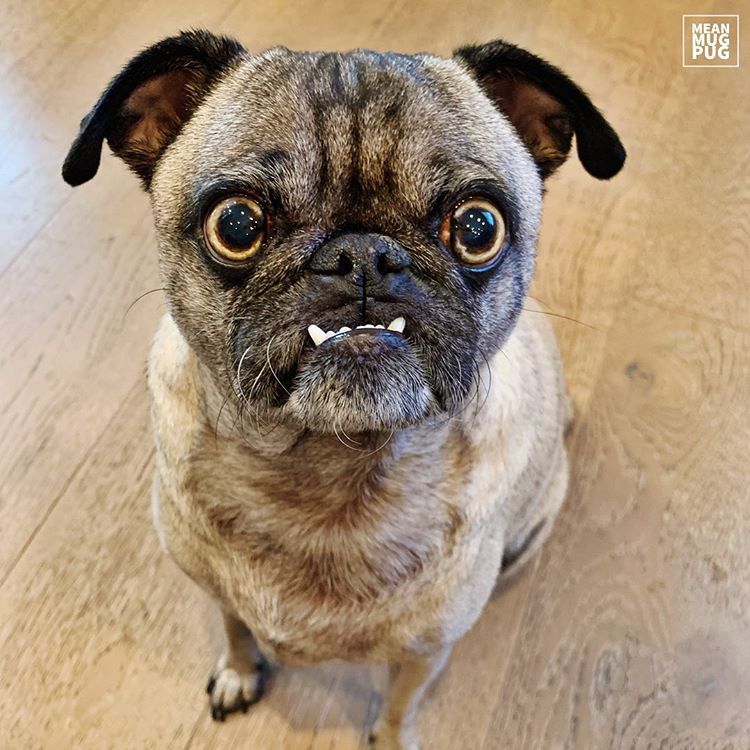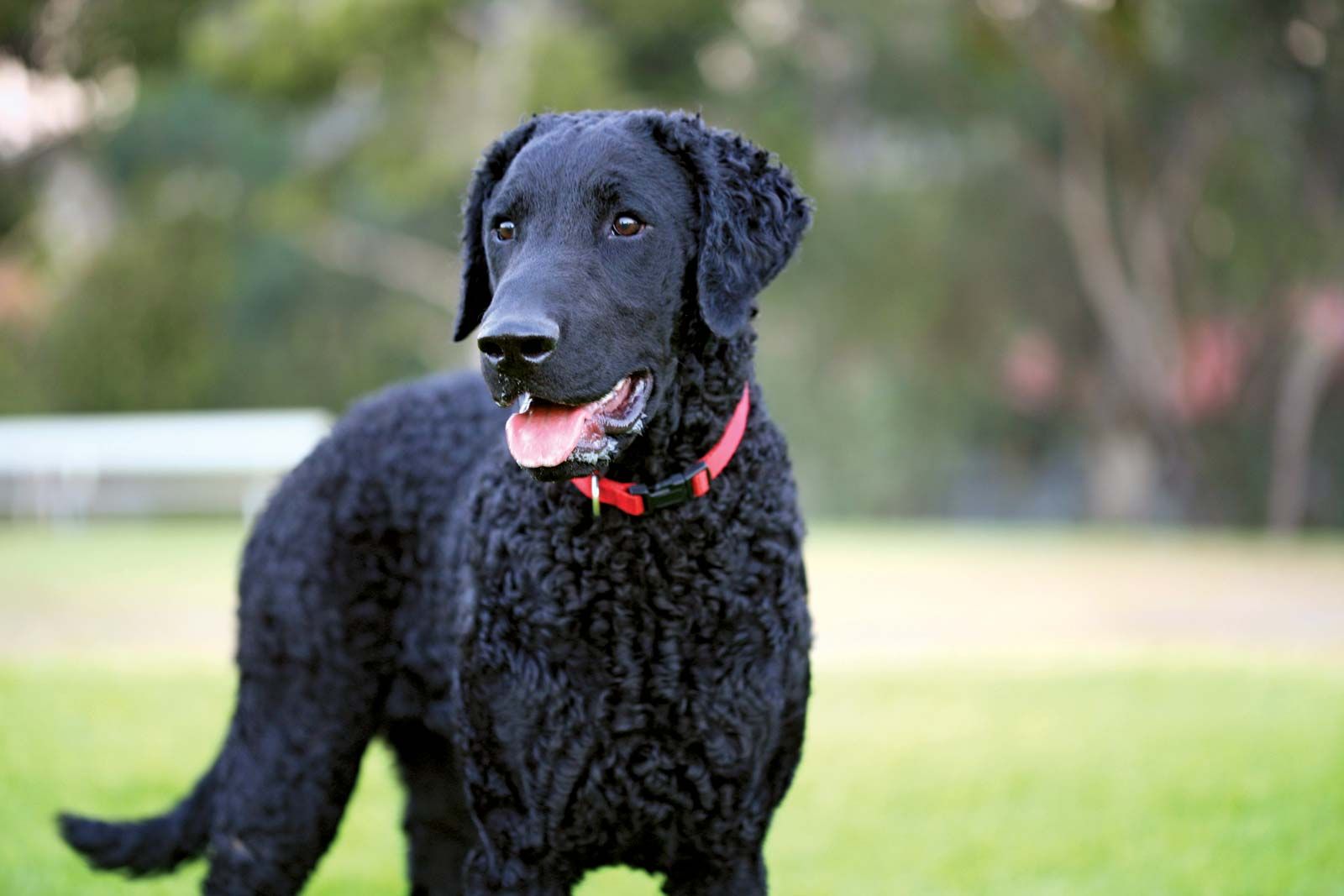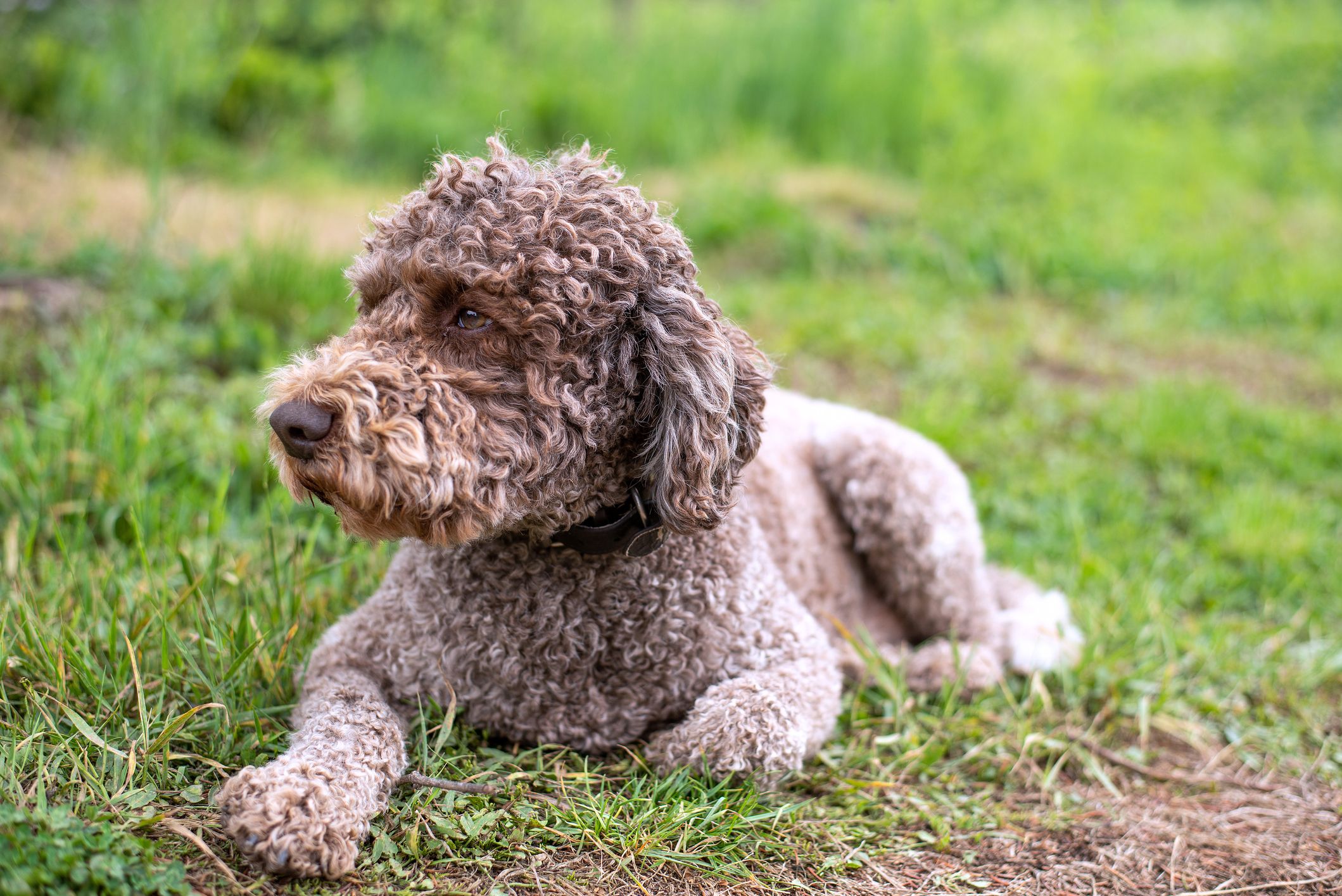Key Takeaways:
- Pugs are a small breed known for their wrinkled face, curly tail, and charming personality.
- They have a friendly and sociable nature, making them great companions for families and individuals alike.
- Pugs require regular exercise to maintain a healthy weight and prevent obesity-related health issues.
- Due to their short snouts, Pugs can be prone to respiratory problems and may require extra care in hot or humid weather.
- Grooming needs for Pugs are minimal, but they do shed moderately throughout the year.
Are you curious about the adorable pug breed? Well, get ready to be captivated by the world of pugs and discover why understanding their characteristics and care is essential for any dog lover. Whether you're considering getting a pug or simply fascinated by these charming little creatures, delving into this subject will bring you a wealth of benefits. Did you know that pugs are one of the oldest dog breeds in existence, dating back over 2,000 years? That's right! These wrinkly-faced companions have been winning hearts for centuries. By exploring their unique traits and learning how to properly care for them, you'll not only gain valuable insights into the fascinating world of dogs but also become equipped with the knowledge to provide the best possible care for your furry friend. So, let's embark on this exciting journey together and uncover all there is to know about pugs: their endearing personalities, health considerations, grooming needs, and more. Get ready to fall head over heels for these lovable canines!
What is a Pug? Description and Unique Characteristics
Pugs are small, adorable dogs that have a unique appearance. They have a wrinkled face, big round eyes, and a curly tail. Pugs have short coats that come in various colors such as fawn, black, or silver. One of the most distinctive features of pugs is their flat, pushed-in nose which gives them a cute and comical expression.
Pugs are known for their friendly and affectionate nature. They love to be around people and are often referred to as "lap dogs" because they enjoy cuddling on their owner's lap. Pugs are also known for their playful and mischievous behavior. They have a great sense of humor and can make anyone laugh with their silly antics.
Unique Characteristics of Pugs:
- Pug's wrinkled face: The wrinkles on their face give them a unique look but also require special care to keep them clean.
- Bulging eyes: Pugs have large round eyes that are vulnerable to injury or irritation, so it's important to be gentle when handling them.
- Curly tail: Pugs have a tightly curled tail that adds to their charm. It's important not to pull on their tail as it can cause discomfort or injury.
The Origin of Pugs: A Brief History
The history of pugs dates back thousands of years to ancient China. They were originally bred as companions for Chinese emperors and were highly valued for their loyalty and affectionate nature. Pugs were considered royal dogs and were often seen in the palaces of Chinese nobility.
In the 16th century, pugs made their way to Europe when Dutch traders brought them back from China. They quickly gained popularity among European nobility and became fashionable pets. Pugs were even favored by Queen Victoria of England, who had a deep love for these little dogs.
Today, pugs are beloved pets all around the world. They have become one of the most popular dog breeds due to their adorable appearance and friendly temperament.
Common Health Issues in Pugs and How to Take Care of Them
Pugs are generally healthy dogs, but like any breed, they can be prone to certain health issues. One common health problem in pugs is their susceptibility to respiratory issues due to their flat faces. Their short noses make it harder for them to breathe properly, especially in hot or humid weather.
Pugs are also prone to obesity, which can lead to various health problems such as joint issues and heart disease. It's important to provide them with a balanced diet and regular exercise to maintain a healthy weight.
Taking Care of Pug's Health:
- Regular visits to the veterinarian: It's essential to take your pug for regular check-ups and vaccinations to ensure their overall health.
- Maintaining a healthy weight: Feed your pug a balanced diet and avoid overfeeding. Regular exercise such as daily walks will help keep them fit and prevent obesity.
- Keeping cool: Pugs are sensitive to heat, so it's important to provide them with a cool environment during hot weather. Avoid exercising them in extreme temperatures.
The Origin of Pugs: A Brief History
Pugs have a rich and fascinating history that dates back thousands of years. They are believed to have originated in ancient China, where they were highly regarded as royal companions. Pugs were treasured by Chinese emperors and often kept in luxurious palaces. These dogs were even given their own dedicated living quarters and served by their own attendants. The Chinese valued the pug's unique appearance, with its distinctive wrinkles and pushed-in face.
In the 16th century, Dutch traders brought pugs from China to Europe, where they quickly gained popularity among European nobility. Pugs became fashionable pets in many European courts, including those of England, France, and Spain. Their charming personalities and small size made them ideal lapdogs for aristocrats.
Today, pugs are beloved around the world for their adorable looks and friendly nature. They have become popular family pets and are often seen participating in dog shows and competitions. Despite their small stature, pugs have left a big pawprint on history.
Common Health Issues in Pugs and How to Take Care of Them
While pugs are generally healthy dogs, they do have some common health issues that owners should be aware of. One such issue is brachycephalic airway syndrome, which affects breeds with short noses like pugs. This condition can cause breathing difficulties due to narrowed airways. It's important to provide a cool and well-ventilated environment for your pug to prevent overheating.
Another health concern for pugs is obesity. These dogs love food and can easily gain weight if not properly managed. It's crucial to monitor their diet carefully and ensure they get regular exercise to maintain a healthy weight.
Pugs are also prone to eye problems such as corneal ulcers or dry eyes. Regular eye examinations by a veterinarian are essential to catch any issues early on. Additionally, pugs may develop skin allergies or infections, so proper grooming and regular bathing are crucial to keep their coat clean and healthy.
By being proactive in monitoring your pug's health and providing them with the necessary care, you can help ensure they live a long and happy life.
Pugs: Their Temperament, Social Behavior, and Compatibility with Children and Other Pets
Pugs have a delightful temperament that makes them excellent companions for people of all ages. They are known for their friendly and affectionate nature, always eager to be by their owner's side. Pugs thrive on human companionship and enjoy being part of a loving family.
These dogs are generally good with children, as they are patient and playful. However, it's important to supervise interactions between young children and pugs to prevent accidental injuries. Pugs may not appreciate rough handling or pulling on their ears or tail.
When it comes to other pets, pugs usually get along well with them. They are social animals that enjoy the company of other dogs or even cats if properly introduced. Early socialization is key to ensuring a harmonious relationship between your pug and other pets in your household.
It's worth noting that pugs can sometimes exhibit stubbornness during training sessions. However, with patience, consistency, and positive reinforcement techniques, they can be trained successfully. Overall, pugs make wonderful family pets due to their loving nature and compatibility with both children and other animals.
Exercise Needs for Pugs: Keeping Them Active and Healthy
While pugs may have a reputation for being couch potatoes, they still require regular exercise to stay fit and healthy. Daily walks are essential for keeping their weight in check and preventing obesity-related health issues.
Pugs have a moderate energy level but can easily overheat due to their short noses. It's important to avoid exercising them during the hottest parts of the day and provide plenty of water breaks. Engaging in activities that don't put too much strain on their respiratory system, such as short play sessions or indoor games, can also help keep them active without causing discomfort.
Mental stimulation is equally important for pugs. Puzzle toys, obedience training, and interactive games can help keep their minds sharp and prevent boredom. These activities also strengthen the bond between you and your pug while providing a fun outlet for their energy.
Remember to tailor your pug's exercise routine to their individual needs and abilities. Some pugs may have limitations due to health conditions or age, so always consult with your veterinarian to ensure you're providing appropriate exercise for your furry friend.
Dietary Needs for Pugs: What to Feed Them and How Much?
Feeding your pug a balanced diet is crucial for their overall health and well-being. It's recommended to choose high-quality dog food specifically formulated for small breeds like pugs. Look for options that contain real meat as the main ingredient and avoid foods with excessive fillers or artificial additives.
Pugs have a tendency to overeat, so it's important to establish a regular feeding schedule and monitor portion sizes. Divide their daily food intake into two or three meals to prevent bloating or weight gain. Consult with your veterinarian regarding the appropriate amount of food based on your pug's age, weight, and activity level.
Treats can be given occasionally but should not make up more than 10% of their daily caloric intake. Opt for healthy treats such as small pieces of fruits or vegetables that are safe for dogs.
Always provide fresh water throughout the day to keep your pug hydrated. Avoid leaving food out all day as it may lead to overeating or spoilage.
By providing a nutritious diet tailored to their specific needs, you can help ensure your pug maintains a healthy weight and enjoys optimal health throughout their life.
Grooming Tips for Pugs: Keeping Their Coat Clean and Maintained
Pugs have a short, double coat that requires regular grooming to keep it clean and healthy. Despite their short hair, they do shed moderately, so regular brushing is necessary to minimize loose hair around your home.
Use a soft-bristle brush or a grooming mitt to gently brush your pug's coat at least once a week. This helps remove dead hair and distribute natural oils, keeping their skin and coat in good condition. Pay extra attention to areas with wrinkles, such as the face and neck, as these can accumulate dirt or moisture.
Regular bathing is also important for pugs. Use a mild dog shampoo specifically formulated for sensitive skin to avoid irritation. Be sure to thoroughly rinse off all the shampoo to prevent any residue from causing skin problems.
Pugs are prone to ear infections due to their floppy ears, so it's essential to clean their ears regularly. Use a damp cloth or specialized ear cleaning solution recommended by your veterinarian. Gently wipe the outer part of the ear without inserting anything into the ear canal.
Lastly, don't forget about dental care. Pugs are susceptible to dental issues, so brushing their teeth regularly with a dog-friendly toothpaste can help maintain good oral hygiene.
By following these grooming tips, you can keep your pug looking and feeling their best while preventing common skin or coat problems that may arise.
In conclusion, pugs are a friendly and affectionate dog breed known for their wrinkled face and curly tail. They require regular exercise, grooming, and attention to maintain their health and happiness.
Are Pugs high maintenance?
Pugs can be seen as requiring a lot of care due to their brachycephalic nature, which often leads to respiratory problems. When it comes to their behavior, they are generally calm, sleep frequently, and don't bark excessively. Additionally, they are a suitable dog breed for apartment living.
Are Pugs easy to take care of?
Living With: Pugs are very low-maintenance pets, but they are prone to weight gain and need to have their diet and exercise monitored closely to avoid obesity. They are not well-suited for hot and humid climates due to their short muzzle, and owners must be cautious of heatstroke. Pugs are also known to snore, which is a result of their short muzzle.
Is a pug a good family dog?
Are Pugs suitable for children? Pugs are playful and adaptable, making them great companions for kids. These small and energetic dogs are ideal for families with younger children, as they make excellent family pets due to their sturdy nature.
What are Pugs weaknesses?
What are the disadvantages of owning a Pug? Pugs are susceptible to various health issues such as infections in the eyes, ears, and skin, as well as respiratory problems. This necessitates regular and frequent bathing and cleaning of the ears, as well as frequent visits to the veterinarian, which can sometimes be costly.
Are pugs hard to potty train?
Contrary to popular belief, pugs are not easily house-trained. While they are generally intelligent, pugs can be stubborn, particularly when it comes to house-training. It often requires the use of specific motivational tools, such as dog treats, to effectively train them.
What is the life expectancy of pugs?
Pugs have a relatively long lifespan of 13-15 years, but this doesn't mean they are completely healthy. Due to their flat face, large eyes, and many wrinkles, this breed is susceptible to various health issues such as breathing difficulties, eye problems, and skin infections.

















